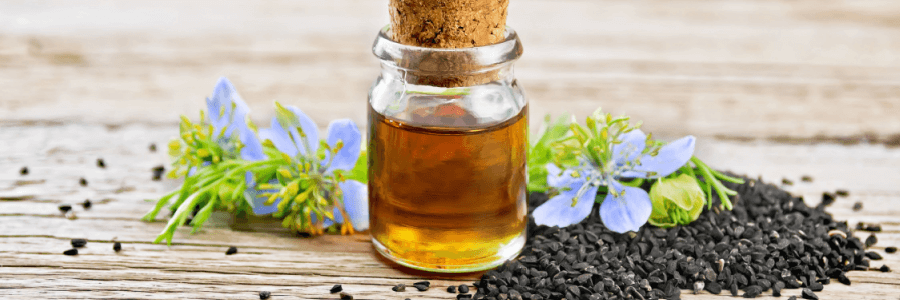Soursop: What You Need To Know About This Super Fruit
|



Soursop, or Graviola, is a tropical fruit that grows in the American tropics. Contrary to ‘sour’ existing in its name, it is anything but (unless it’s unripe)! This funky looking produce is actually quite sweet and so are its potential health benefits. In this article, you’ll learn the basics of Soursop, its health benefits, nutrition data, and how to consume it.
- Soursop: An Overview
- A Short History
- Where Is Soursop Found?
- How Do People Eat Soursop?
- Main Highlights & Potential Benefits
- Soursop Nutritional Profile
- Conclusion

Soursop: An Overview
Scientific Name: Annona muricata.
Other Names: Guanabana, Brazilian Paw Paw, Sirsak, Graviola, Custard Apple, Cherimoya, Guyabano, Corossolier, Guanavana, Toge-Bonreisi, Durian bengala, Nangka blanda, Nangka londa.
Appearance: Prickly, greenish-yellow skin, white flesh.
Shape: Oval, conical, or heart-shaped.
Size: 20-30 centimeters long.
Taste: Strawberry apple or pineapple flavor with citrus undertones.
Texture: Creamy.
Potential Benefits: Highly nutritious, anti-inflammatory, and anti-cancer properties, high in antioxidants and anti-bacterial activities.
A Short History
The Soursop tree was one of the first trees carried from America to the Old World Tropics where it is now widely distributed. This plant is propagated in many tropical and subtropical regions, however the exact origin is unknown. Throughout the years, it has been used medicinally as an herbal medicine, in cooking oils, soaps, and even insecticides.
Where Is Soursop Found?
Soursop trees love areas of high humidity with warm winters. In fact, temperatures below 37 °F can make the fruit dry and can even kill the entire tree. Soursop grows natively in tropical regions. You can find Soursop growing in Mexico, Jamaica, Cube, the West Indies, northern South America, China, Australia, Africa and the Caribbean.
These trees can grow up to 13 feet tall and bear fruit that range in size from 20 to 30 cm long.
How Do People Eat Soursop?
The leaves and fruit of the Soursop tree can all be utilized when it comes to consumption. The seeds are considered poisonous and should not be consumed, however they can be used for other purposes.
Soursop fruit is most commonly eaten raw. Simply cut the fruit in half and scoop out the flesh with a spoon – being sure to spit out the seeds as you go.
Soursop is also available in supplement form. You may choose from soursop teas, soursop bitters (a special blend of soursop and other medicinal herbs), juice, capsules, dried leaves, and liquid extracts. You can learn more about Soursop bitters here:
What Is Soursop Bitters? Benefits & How To Take
The food industry also uses the fruit in a variety of ways including making ice cream, candies, nectars, yogurts, syrups, sherbets, canning, and for preparation of different beverages.
While soursop has many potential benefits, it lacks human research and has its own set of possible side effects. Additionally, the FDA has yet to determine a safe daily dose. We explore the research we do have and expand more on potential adverse effects in the article linked below.
Top 5 Soursop Health Benefits
Main Highlights & Potential Benefits*
- High in antioxidants like luteolin, quercetin, and tangeretin that prevent against free radicals and damage to cells
- Rich in dietary fiber and vitamins C and B
- High in polyphenols
- Anti-inflammatory properties may improve skin issues like eczema or help alleviate certain pains and ailments
- Can improve digestive health
- Can help fight bacteria
- Can aid in stabilizing blood pressure
- Can boost immunity and help fight infection
- May help regulate blood sugar
- May help treat gout
- May prevent and kill cancer cells
- Crushed seeds and leaves are lethal to headlice and bedbugs
Soursop Nutritional Profile
According to the US Department of Agriculture, 100g of raw Soursop contains the following:
Conclusion
Soursop, when left to ripen, is a sweet, pineapple like fruit with potential health benefits. It also has its own set of risks and potential side effects. More research is greatly needed to confirm a recommended daily dose and safety threshold for consumption as well as to confirm its purported benefits. This tropical fruit has a strong nutritional profile; is high in vitamins, minerals, and antioxidants that we already know are good for the body. If you are thinking about trying Soursop, you should first speak with your doctor and start with only small amounts.
Medical Disclaimer
Please speak with your doctor or other licensed healthcare professional before beginning any new supplement including Soursop. None of the content on this site is or should be considered medical advice. The purpose of this article is simply to highlight relevant research for those curious about the potential benefits of consuming Soursop.

 Login
Login



For fifteen years, I’ve battled herpes, relying on antivirals for temporary relief. Discovering Dr. Okosun herbal cure through a blog changed my life. Inspired by another’s recovery story, I contacted Dr.Okosun and He guided me through his natural treatment, and to my amazement, his herb erased every trace of HSV from my system. It’s been over six years, and I’m still herpes-free till date after using Dr Okosun herbs. His remedies truly transformed my health. If you’re seeking more than just symptom relief, reach out to Dr. Okosun. His approach has given me my life back. Forever grateful
drokosun55@gmail. com
+2349117617336
“I was a victim of a significant financial scam, losing $567,860 USD. After three years of attempting to recover my funds, I was introduced to Brunoe Quick Hack. Their expertise and dedication led to a successful recovery of my stolen assets. I highly recommend their services to anyone who has fallen victim to similar scams.” Email: Brunoequickhack{AT}gmail.COM
Whats-App> + 1705 -784-2635
— Doris Bernard, Texas
Hello world im so happy to give this testimony about an African herbalist called Dr okosun who saved my life from herpes virus that almost took my life, Never in my life did I think herpes could be cured by herbal medicine, I thank God for giving me a second chance, so i’m using this medium to reach the life of hundreds of people currently facing such diseases all hope is not lost. How ever chronic is the sickness or disease Dr okosun will cure you permanently from it for i’m a living testimony of his miraculous work and you can get in touch (drokosun55@gmail .com)
I have a history of Crohns Disease, COPD, Diabetes, High Blood Pressure and I am on medication for these ailments. Do you have any tonics on the market that can help with COPD, intestinal health, and inflammation
Kristen would you share how you make this tea please?